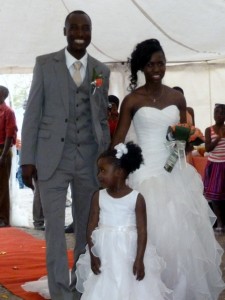 We were lucky enough to travel to the north a few weeks ago to attend the wedding of one of our professor’s. We’ve been told that nearly 50% of Namibians are from “the North” which tends to mean anything about Windhoek (which is actually in the middle of Namibia). Regardless, nearly every one I talk to says this is where they’re from so I was extremely excited to see this notorious place!
We were lucky enough to travel to the north a few weeks ago to attend the wedding of one of our professor’s. We’ve been told that nearly 50% of Namibians are from “the North” which tends to mean anything about Windhoek (which is actually in the middle of Namibia). Regardless, nearly every one I talk to says this is where they’re from so I was extremely excited to see this notorious place!
After months of seeking approval from relatives, Romanus, our professor, and his fiancé, Katarina were finally getting married in the city of Ongwediva. So we made the 10 hour trip through the country (which was really nice) and we stayed at the Rural Development Centre where we got to see some of the new technologies they’re working on to help farmers and improve sanitation.
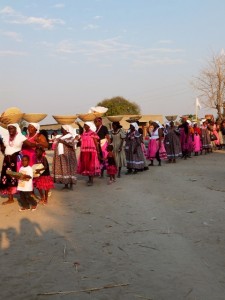 The wedding was comprised of a traditional Christian service and hints of tribal rituals. The bride wore the big white dress and veil, there were bridesmaids and groomsmen, and they went through a typical Catholic ceremony with church service following. Thought it was entirely in Oshiwambo, I still picked up on many aspects, like recognizing the tune to “Praise the Lord.”
The wedding was comprised of a traditional Christian service and hints of tribal rituals. The bride wore the big white dress and veil, there were bridesmaids and groomsmen, and they went through a typical Catholic ceremony with church service following. Thought it was entirely in Oshiwambo, I still picked up on many aspects, like recognizing the tune to “Praise the Lord.”
The most exciting part was that you got to relive the reception the very next night, because there are two! They were in Okatana and Onampira , one in the grooms home village and the other in the brides. At each there were a couple of different rituals, but one that seemed like a lot of fun to me was the giving of gifts. Everyone got in a line and danced and shouted in excitement on their way to the bride and groom. After these ended, we had lots of food, even cow intestine, and on the second night had a blast dancing with a group of kids, but it was strange to us that not many people danced at these receptions and the DJ ended soon after dinner.
We also spent time at the local trade fair, which was a lot like many of the local fairs we students are used to. There were vendors from all over Namibia selling tractors, handmade goods, and other accessories, lots of food, booths for government departments and also university advertisers. So we bought a few of our favorite pieces and had lunch. “Black and Yellow” came on while we were eating and the Pittsburgher in me got really excited.
I noticed here and in many parts of the north that people are curious about our being here and often stare. For the most part if you smile and wave it’s received fairly well, but a few times people just continued to stare and I had to brush it off. I also had to realize that white people were really uncommon in this area and I can imagine that people who are “different” in the United States are also stared at—it’s humbling to be on the other side some times and I think throughout this trip I might need to get used to it.
Finally, we headed to Etosha National Park! It’s a fenced in park where animals roam and within it there are places where people can camp. The park is almost 9,000 square miles and includes elephants, rhinos, giraffes, zebras, lions, springbok, kudus, so many types of birds, and many other animals. The first evening we arrived in a camping ground called Halali and had a braai (barbecue). There was something really homey about a being with the group, taking the time to prepare the food and then roasting marshmallows for smores (using the can opener as your stick). Overall being at the park was comforting.
We slept at another park called Okaukeujo the second night. A few of us went swimming and in the evening relaxed by a waterhole where you could watch the animals. This was definitely my favorite part and I think the pictures will do a much better job of describing how amazing this place is. This park had a nice restaurant where we tried some Kudu and lamb, which some of us were a little turned off by after having watched Kudu a few hours before.
After one last game drive and some final views of the animals, we headed back to Windhoek to start our classes for the semester.
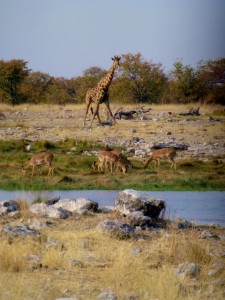
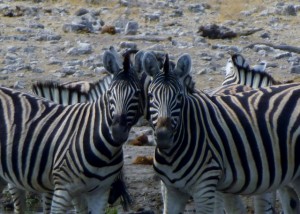

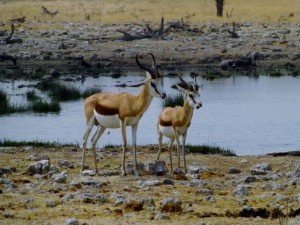
Leave a Reply